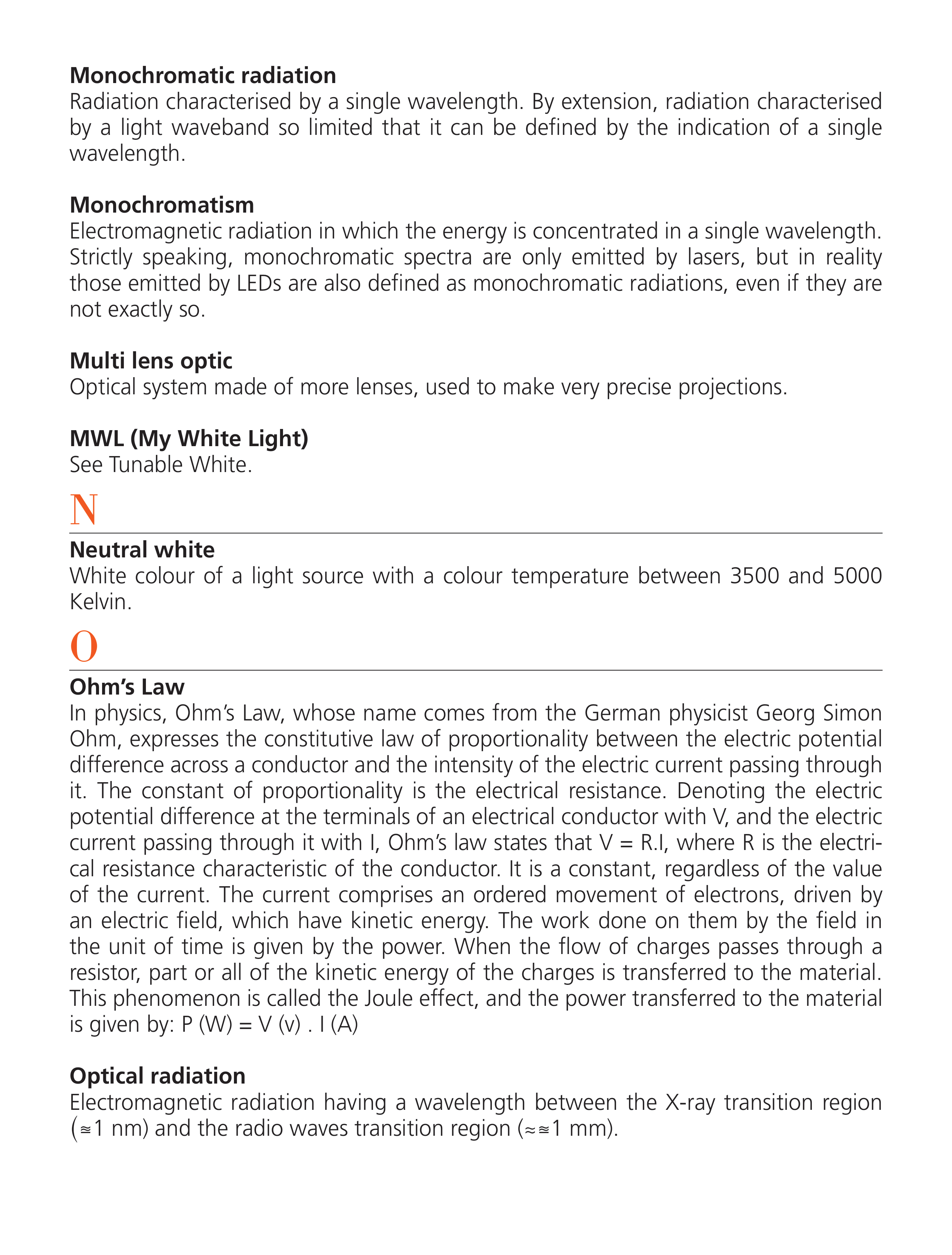Monochromatic radiation
Radiation characterised by a single wavelength. By extension, radiation characterised
by a light waveband so limited that it can be defined by the indication of a single
wavelength.
Monochromatism
Electromagnetic radiation in which the energy is concentrated in a single wavelength.
Strictly speaking, monochromatic spectra are only emitted by lasers, but in reality
those emitted by LEDs are also defined as monochromatic radiations, even if they are
not exactly so.
Multi lens optic
Optical system made of more lenses, used to make very precise projections.
MWL (My White Light)
See Tunable White.
N
Neutral white
White colour of a light source with a colour temperature between 3500 and 5000
Kelvin.
O
Ohm’s Law
In physics, Ohm’s Law, whose name comes from the German physicist Georg Simon
Ohm, expresses the constitutive law of proportionality between the electric potential
difference across a conductor and the intensity of the electric current passing through
it. The constant of proportionality is the electrical resistance. Denoting the electric
potential difference at the terminals of an electrical conductor with V, and the electric
current passing through it with I, Ohm’s law states that V = R.I, where R is the electri-
cal resistance characteristic of the conductor. It is a constant, regardless of the value
of the current. The current comprises an ordered movement of electrons, driven by
an electric field, which have kinetic energy. The work done on them by the field in
the unit of time is given by the power. When the flow of charges passes through a
resistor, part or all of the kinetic energy of the charges is transferred to the material.
This phenomenon is called the Joule effect, and the power transferred to the material
is given by: P (W) = V (v) . I (A)
Optical radiation
Electromagnetic radiation having a wavelength between the X-ray transition region
(≊1 nm) and the radio waves transition region (≈≊1 mm).





